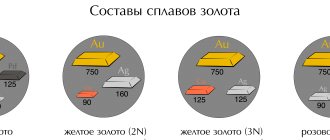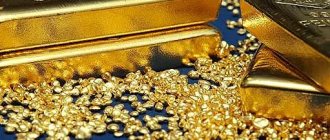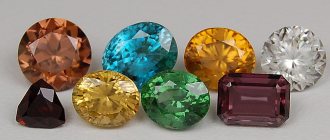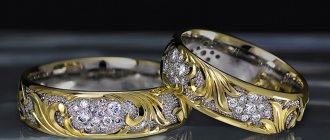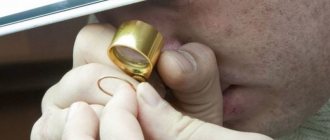History of the Assay System
Hallmarks, which were placed on silver items from the eighteenth to the early twentieth centuries, indicated their value. From them it was possible to determine when and where the product was made and even which craftsman worked on it. The assay system in Russia was created by Tsar Peter I. By special decree, four samples of silver and gold were determined; the assay system was called spool.
At that time, only the master and the elder had the right to brand products. Selling anything made of precious metal without a hallmark was prohibited. Those who had the right to make impressions were even trained specifically for this.
Already in the nineteenth century, special chambers were equipped for hallmarking silver and other metals. The print itself has also undergone changes. It began to contain the coat of arms of the city where the item was made, the sign of the inspector (initials) and the sample of the metal. At that time, a new assay charter was also adopted, according to which the empire was divided into assay districts, and the mark took the form of a woman’s head in a kokoshnik. The stamp also contained the initials of the head of the district and a hallmark. Since they began to brand a product indicating the place where it was made, it has become possible to recognize the works of great masters.
Mark on a silver fork
USSR silver samples, all sample numbers
The Soviet government cared little about hallmarking silver, since the priority goal was to audit precious items and subsequently sell them to other countries, since it was necessary to raise funds for the world revolution. The first actions regarding the normalization of processes in the jewelry business were made a year after the revolution, when control over all processes was entrusted to a commission that was formed under the Council of People's Commissars.
Almost ten years later, silver hallmarking was carried out according to the rules that were introduced under Tsarist Russia. The document was published at the end of the nineteenth century. The purity of silver was determined by the presence of a mark. which looked like a woman's head in a kokoshnik, which is enclosed in shields of various shapes. The shapes were round, rectangular, oval or hammer-shaped. Next to the image was a number indicating the sample, and the initials of the heads of the assay districts were also indicated. In 1908, the marking was changed, and the female profile began to be turned to the right side, and the district was designated in Greek letters.
These marks continued to be used at enterprises that opened after the revolution. In 1918, a platinum plant began operating in the capital, which was created on the basis of the factory named after. Khlebnikov. He was engaged in the production of products intended for enterprises in the chemical and electrical industries, and also dealt in small batches of silver cutlery, namely spoons, forks and cup holders. These products were marked with the “Platinopribor” mark.
In the twenties of the last century, jewelry was made in artisanal jewelry workshops. Their number increased greatly, and the People's Commissariat for Finance allowed the free sale of jewelry. As a result, in 1923, the Moscow Jewelry Partnership was created, which was supposed to control the production and sale of gold and silver items. As a result, for three years all jewelry products were labeled “MYT”.
At the end of the revolution, only three assay offices operated for a long time, which were located in the capital, St. Petersburg and Kostroma, but since 1924 there were already fourteen of them. Precious materials were already weighed and began to be counted in metric units, and silver samples no longer had double digits. but three-digit.
In 1927, a new branding system was adopted, which continued to operate for thirteen years. All silver items had to correspond to the official hallmarks and be marked with the hallmark of the assay office. The authenticity of the products was confirmed by a relief or linear image of a worker holding a hammer on his shoulder. The organization code was also added to this picture, and each of them was distinguished by a separately assigned Greek letter, which could periodically be replaced by a symbol with various combinations.
Since 1936, an All-Union Office was created to regulate the sales and production of precious items, which became the legal successor of Mostorg. A jewelry factory was created in the capitals of each republic, which was supposed to mark its products with a special mark. They acted in the same way in artels and industrial plants, which were actively opened in the thirties of the last century.
Since 1953, the last digits of the year of manufacture of products began to be added to the mark. For example, “TZ0” meant that the item was made by representatives of the Tallinn Jewelry Factory in 1960. If the letters at the enterprises were identical, then the hallmark inspection codes were examined to determine the place of production.
Types of silver hallmarks in Russia
Now the most common alloys are 925 and 875 silver. Most often, silver hallmarks have the shape of an oval with cut off sides, an image of a woman’s head in a kokoshnik, turned to the right. In the lower left corner there is a letter that indicates the place where the product was tested; the numbers on the left indicate the alloy sample. Products may also be branded as follows:
- The main hallmarks are the marks called the letters “A”, “B”, “C”, “G”. Their presence in the product is sufficient. The stamp of the letter “A” looks like the head of a woman in a kokoshnik in a circle, outside of which there may be a sample. The letter “B” stamp has the standard appearance described above. “B” and “G” have a similar appearance to that corresponding to “A” and “B”, except that instead of a woman in a kokoshnik, they depict a five-pointed star with a hammer and sickle inside. Products made of precious metals were branded with such imprints in the USSR. They are not used now.
- Additional hallmarks include hallmarks of the letters “D”, “E”, “Zh”, “Z”. They have no independent meaning. This mark in itself is not enough to determine the quality of the product; the main one should be next to it. Nowadays only the letter “D” stamp is used. It looks like a rectangle with rounded ends, inside of which there is a sample designation. The letter “E” was used to mark products that did not correspond to the declared standard. The remaining two have been used previously.
- Another form of the main stamp, the letter “B,” denotes products intended for shipment abroad. They differ from the main one in that instead of a woman in a kokoshnik, they depict a ship. This test is enough.
- Products can also be branded with combined hallmarks. They combine the main mark with the “name”, or the mark of the master, which indicates, in addition to the region where the product was tested, the manufacturer himself.
- For the 50th anniversary of the October Revolution, a temporary stamp was introduced, dedicated to the anniversary in honor of the space explorers; it was valid for two months of 1967.
- Until 1994, for church items it was allowed to use only the stamp of the letter “D”, without the main one.
- Until 1997, medals and coins were marked with letters indicating the precious metal in accordance with chemical designations, with a hallmark next to it. If products do not have artistic value, they are now branded in accordance with generally accepted standards.
- There are several sampling systems. Nowadays metric is used, but until the twentieth century, spool-type was used.
The mark can be placed in several different ways. Most often it is applied mechanically. But if the product is thin or especially expensive, a laser type of application can be used. Since items made from precious metals are subject to abrasion, you must be especially careful with laser-applied jewelry. If they are subjected to constant mechanical stress, the sample may be erased.
Assay systems used around the world
Our country currently uses the metric assay system. It shows the number of parts per thousand of pure metal. If you divide this value by 10, you can get its percentage. For example, 585 gold will contain 58.5%, and 925 silver will contain 92.5%.
The karate system is used in many countries around the world. Most European countries and America use it. Pure metal has a purity of 24 carats. If there is only half of it in the alloy, then such a product will have a purity of 12 carats. You can calculate the metric sample from a carat sample using the formula k * m / 1000, where k is the sample in carats, m is the metric sample.
Density of silver depending on the sample
In Tsarist Russia, a spool test was used. Zolotnik was a weight measure that was equal to 1/96 of a Russian pound, approximately four grams.
Branding of coated products
Silver in this case can be either the base metal or act as a coating. In the first case, the product is most often plated with gold. Then two samples are placed: the first - of the main alloy and the second - of the alloy with which the decoration is coated.
Cutlery is most often plated with silver. This was especially widespread in the USSR. Then, in parallel with the metal sample, the base alloy was marked. At this time the following designations were adopted:
- MN - cupronickel. Sometimes the designation MELCH was also found.
- MNC - German silver.
- AL - aluminum.
- STAINLESS – stainless steel.
In ancient antique objects, this also happened: only a coating test was given, without indicating the main alloy. This is quite dangerous, since a silver-plated product can be mistaken for being made of pure metal.
The following silver alloys are subject to hallmarking all over the world:
- 800 sample. Composition: 80% silver, the rest copper. It oxidizes quickly and has a pronounced yellowish tint. 830 sample has characteristics similar to the previous one.
- Sample 875. Contains 87.5% silver. Very often used for making tableware and decorations.
- 925 sample is the most common. It has an optimal price-quality ratio. It has high anti-corrosion properties and does not have a yellow tint. Very easy to change shape. Mainly used for jewelry.
- 960 standard is used by artists when working with enamel, as well as for jewelry, especially abroad.
Features of alloys
What does the amount of metal in an alloy practically mean? First of all, this affects the physical characteristics of the material. For example, 999 gold is very soft, making earrings or rings from it is difficult. But the famous 585 is quite suitable, since the nickel, zinc and copper included in it give the alloy much greater strength and resistance to wear.
Samples of the USSR
The weight ratio affects the color. Moreover, not only quantitative, but also qualitative relationships are important here. Thus, the addition of copper to an alloy marked 585 will give the product a reddish tint, and the addition of zinc will turn the alloy white. Silver in large quantities 23.4 by 585 will give the alloy a greenish tint.
The table of gold samples in the USSR indicates quantitative data, but you should learn more about qualitative data.
| Metal | Try |
| Gold | 375, 500, 583, 585, 750, 916, 958, 999 |
| Silver | 800, 830, 875, 925, 960, 999 |
| Platinum | 585, 850, 900, 950 |
| Palladium | 500, 850 |
What information can be obtained by looking at the data in the table?
- 375 - means the presence of 38% pure metal in the alloy. Products made from it are yellow in color, but fade quite quickly, since iron sylphide appears on its surface.
- 500 – the color range varies very widely, since 50% of gold is a mixture of silver and copper and it is their ratio that gives the color.
- 585 - over time replaced 583. They differ little in color and physical characteristics - 58.3% versus 58.5%, but the first value did not meet European standards and, in the end, ceased to be used. Earrings made of 583 USSR gold, as well as rings, brooches and other jewelry are the most popular “investment” of money. Spav is very stable, durable, and does not lose color or shine under any conditions.
Chronology of sample use in our country
- Since 1899, on the basis of the newly introduced statute, an assay mark was established in the form of a woman’s head in a kokoshnik, only still turned to the left, and an assay in the spool system.
- In 1908, the head was already turned to the right, and a letter was added to the mark indicating the assay district to which the product belonged; the sample was still spool-like.
- In 1927, a new brand was introduced in the Soviet Union: it depicted the head of a worker with a hammer. And also a new sample system was introduced - the same one that is used now, metric. The assay district was still designated by a letter of the Greek alphabet.
- In 1958, prints with the image of a star with a hammer and sickle were introduced. The letter of the Greek alphabet was replaced with a letter of the Russian alphabet.
- The prints acquired their modern appearance in 1994, but were used alongside the old ones until April 2002.
And although silver in the form of jewelry is rarely used as an investment, it is still worth paying attention to the hallmark when purchasing it. Especially if jewelry and cutlery are bought secondhand, which is not recommended. It is possible to fake a sample, but it is difficult and dangerous. Therefore, it can be considered a sufficient guarantee of the quality of the metal.
Principles of branding
The mark was applied inside or outside the product. The most popular method of applying it is mechanical. This art is a classic for jewelry workshops. Initially, hammers were used to apply it, but later a special mechanism was created for automatic branding. Special anvils were also created that made it possible to apply jewelry stamps as accurately as possible. The machines were introduced after the need for mass branding arose.
The electric spark method is carried out with the participation of electrodes. For this purpose, a special installation was made, with the help of which the print is burned out with a spark. If the brand has jumpers at the top between the outline and the badge, it means that this item was branded using the electric spark method. This method is more effective, but not all jewelry workshops and factories use it, because such an installation costs a lot of money.
For very expensive jewelry, a special laser can be used, which applies the mark very carefully. This method is not as relevant in mass production because the laser mark disappears over time. If a person has purchased such a product, then he needs to treat it more carefully, because after a while the mark will simply disappear, and it will no longer be possible to confirm that the jewelry belongs to a precious alloy.



